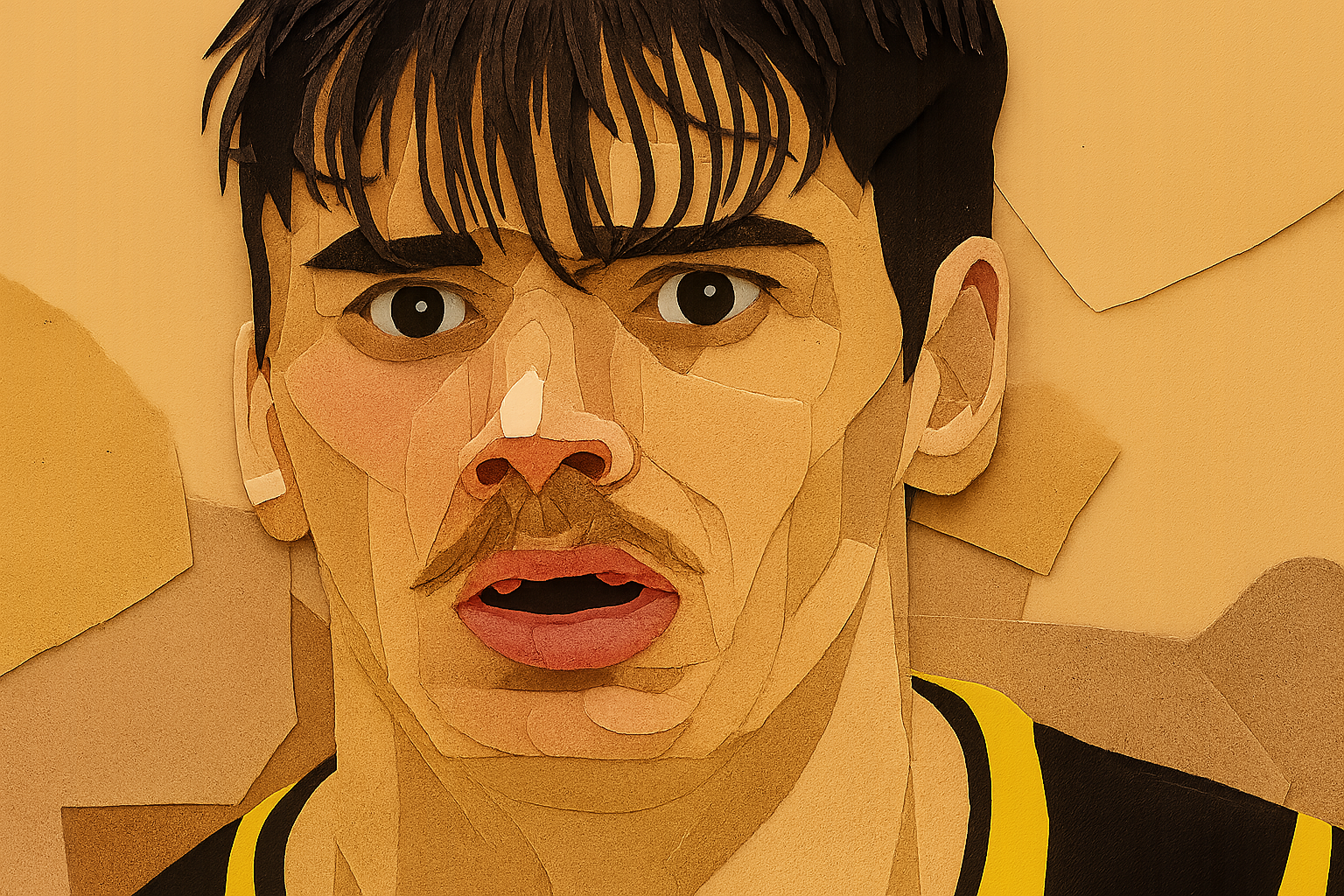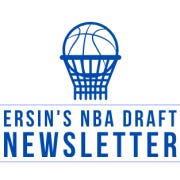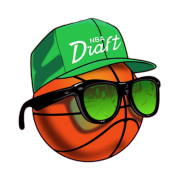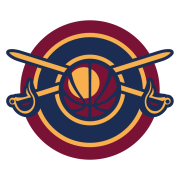"I got my front teeth knocked out, so I knew it was going to be a grind.” - Barnhizer
Brooks Barnhizer’s Christmas season unraveled in small, violent installments.
On December 13, he lost his front teeth in practice; mid-December surgery put them back (unexpected voice warning):
By January 5 at Purdue, they were gone again.
A week later, his foot gave out against Michigan State in the final seconds.
On January 22, he finished a breakaway dunk against Indiana, then met the floor nose-first.
By February 1, when coach Chris Collins emotionally announced his season was over, it felt less like bad luck than a long, quiet argument with fate.
5 months later, he was drafted at #44 by OKC.
You take the good with the bad. I'm sure Barnhizer isn't worried about his senior year with the Wildcats. He's drafted.
Like Barnhizer, OKC fans are going to have to take the good with the bad.
Bad news first; it’s the warm-up act for relief.
Brooks Barnhizer believes in his shot the way children believe in Santa Claus: fervently, innocently, and against overwhelming evidence to the contrary.
Sub 30 percent on 3 in his senior year for a stretch isn't ideal. And, there's no spot on the court where his shooting is mind-blowing.
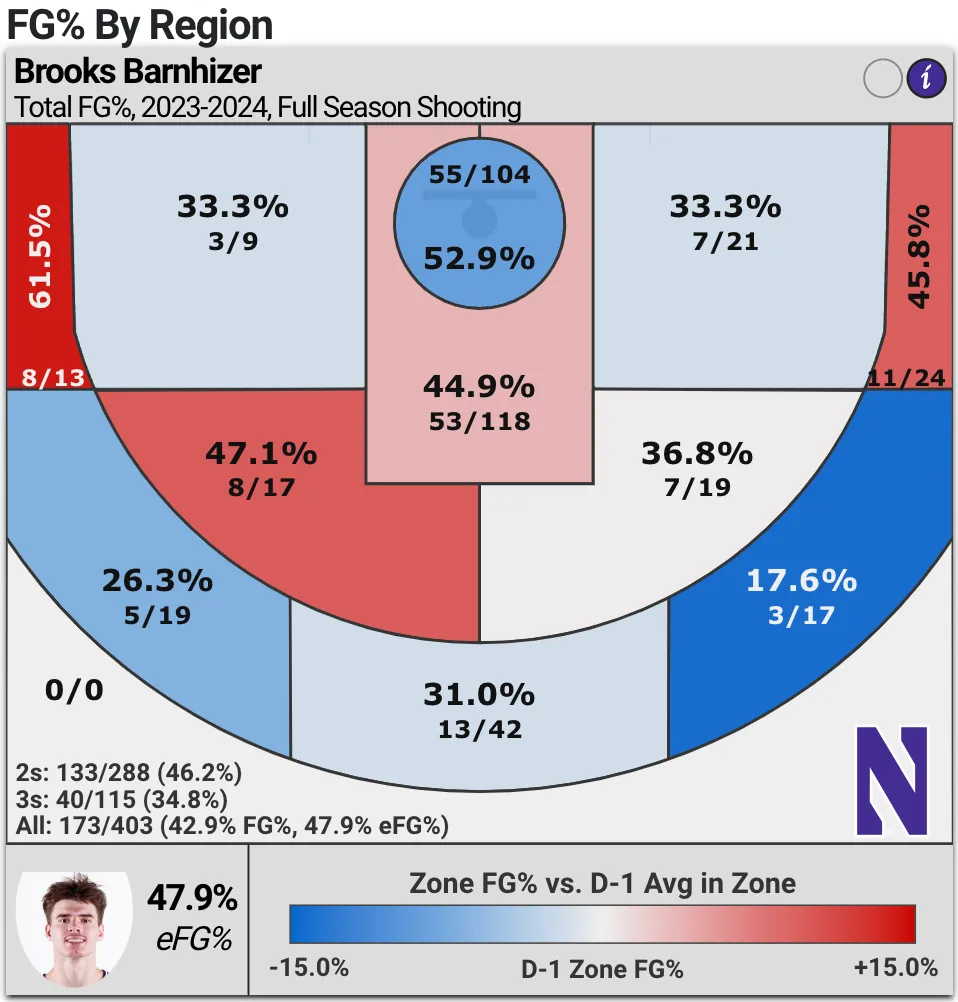
This chart isn't trending upwards. His senior year was as bad as his freshman year. There are two small caveats here: a nagging foot injury and a bunch of forced shot clock prayers dragging his percentage down (such is the life of the guard).
Barnhizer also looks athletic in the way a snapshot can imply (broad frame, decent build) but in games it reads more as functional than explosive, with an okay vertical and lateral quickness that rarely surprises anyone.
He's by no means a slouch.
But he's also not what you would consider a "guaranteed" second rounder.
He could have gone undrafted (as his own team paper predicted) and no one would have blinked an eye.
So... why didn't he?
The Draft Pick
Understanding why OKC picked Barnhizer at #44
I'm not going to go super deep into Barnhizer's technical attributes if that's what you're expecting from this section.

You can read the scout reports. I'll link a few below (I recommend Ersin, the man knows ball better than almost all of us).
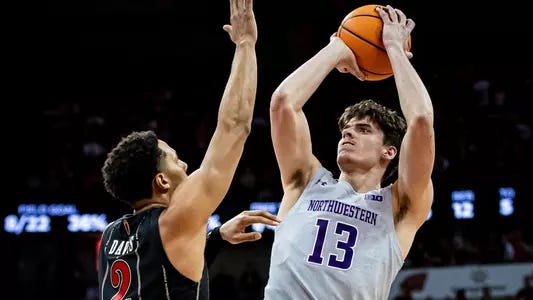
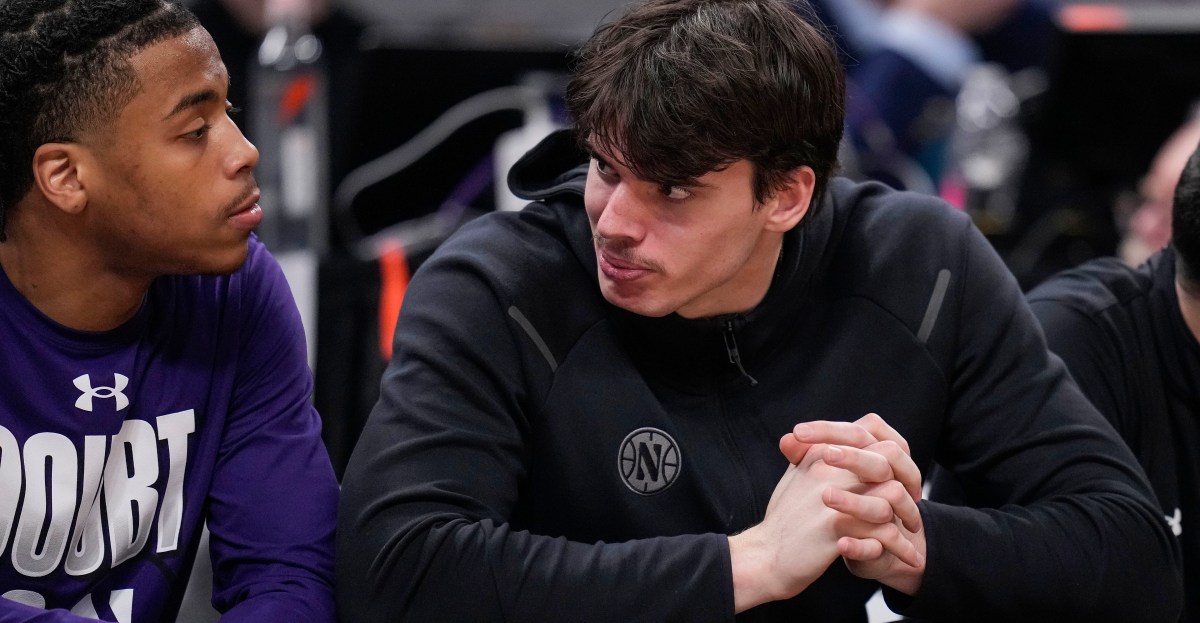
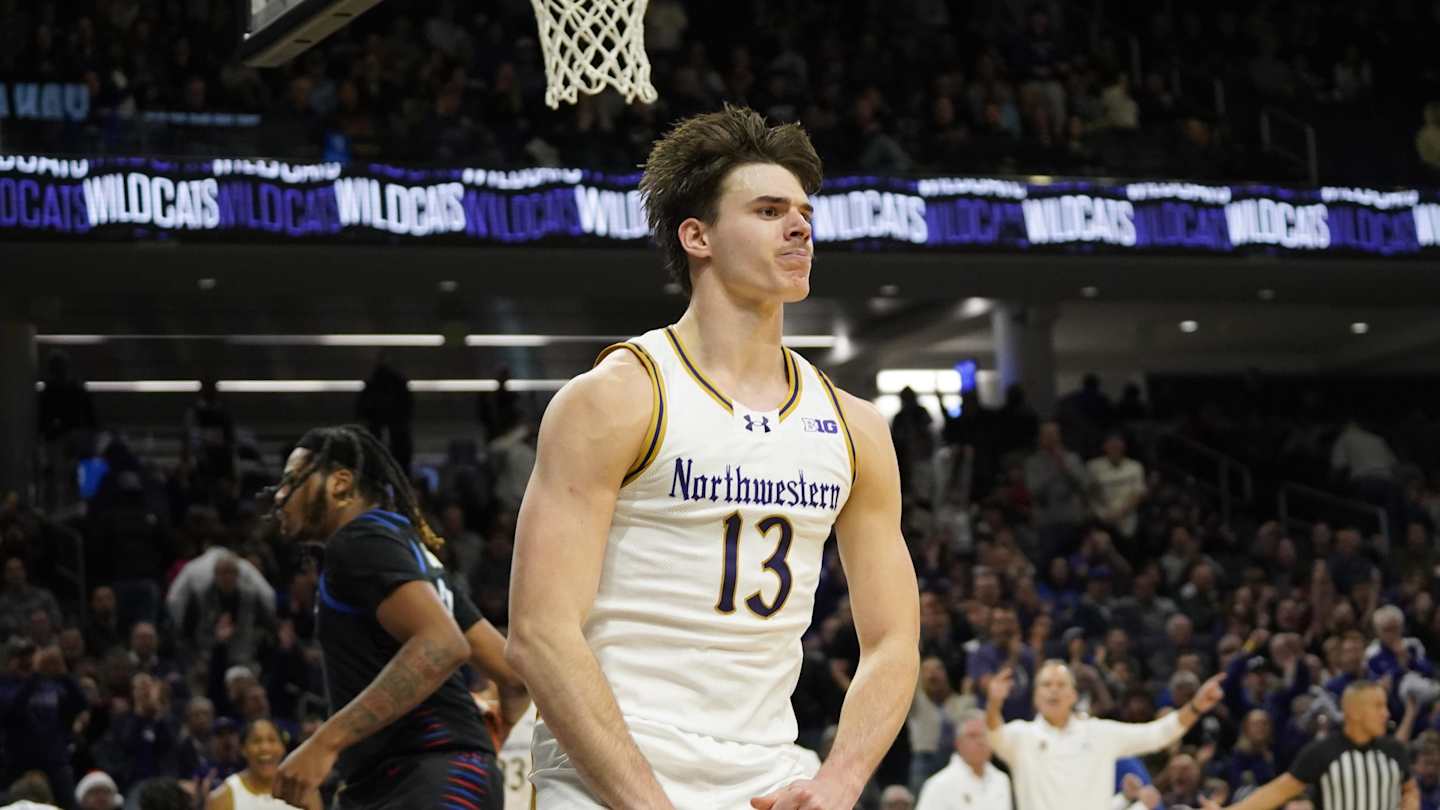
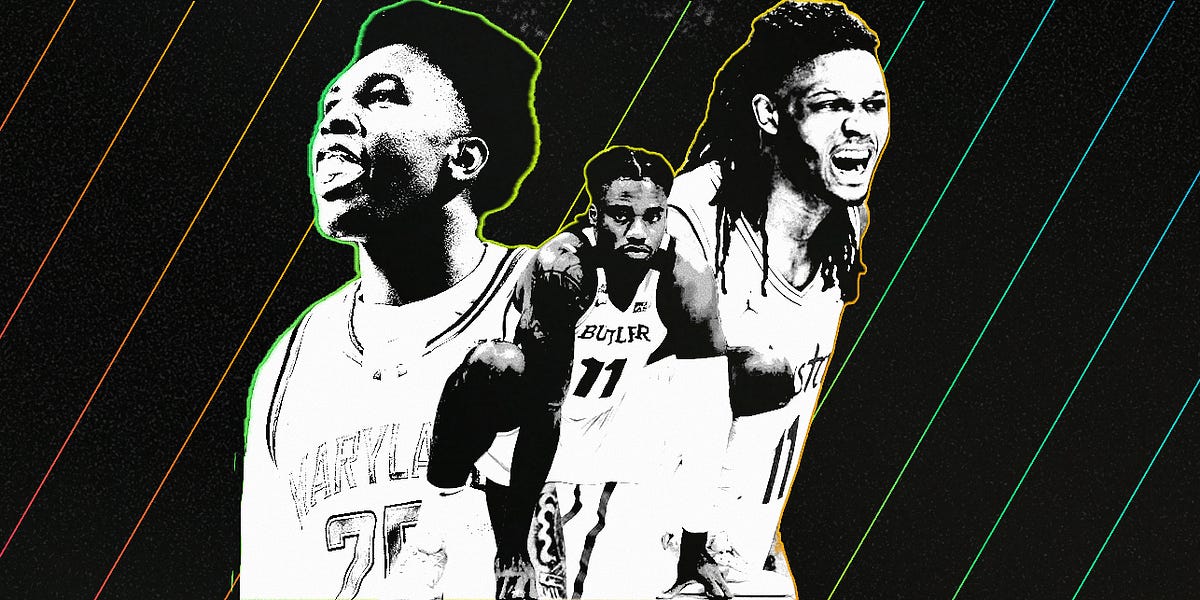

Importantly: these draft reports are often not in sync with internal scouting opinions. If you've watched the draft, you know this.
Outside of maybe the top 3, the draft board never matches the calls.
So, take these opinions with a "grain of salt."

Some of the cons will turn out to be non-issues. Some of the pros will become cons. And the way that players fit into systems, work with coaches, and navigate the complex ecosystem of the NBA can rewrite every single one of their pros and cons within the first few months.
There's that big of a disconnect at times.
Scout reports do not equal NBA ability.
All of this is to say, I'm not sure how much good over-analyzing the technicals is going to do here.
Does he
Personally, I think there are 5 things you really need to know about Barnhizer that will help make sense of why we picked him.
1. Drive
Dort & Caruso-style players win championships; it's proven.
Barnhizer is the purest part of basketball: the unwavering passion, raw grit, and stubborn, glorious defiance (think Josh Hart, Caruso, Herb Jones).
Better, Barnhizer knows this (i.e., he drops the ego, fast, which is exactly what you want) and says as much:
"With guys like Caruso and Dort, I'm on that same timeline. We were similar caliber players in college. We're about the same things. So, I'm excited to be in this program."
You could call the back-to-back injuries poor decision making or bad luck; I think it's easiest to just call them hustle.
He has that dawg in him.

I've watched around 30 Barnhizer games at this point. And I'm starting to see why Wildcat fans love the guy. Why his coach cried at him ending his season. Why he has highlight plays drenching the internet with thousands of views.
Watch enough, and you start to notice what I did: he never takes a possession off, he is relentless in pursuit of rebounds he has no business grabbing, and he has an unshakeable belief in himself and his teammates.
He's also signaled consistently that he's willing to learn and take a backseat role.
"Guys like Caruso and Lu Dort, those are guys I would love to be in the gym with and honestly just be kind of a sponge to," Barnhizer said. "Pick their brain and see, 'How do you guard these things?', or 'What should I do in these situations?'"
In his worst games, he keeps crashing, keeps missing, and yet, impossibly, wonderfully, he keeps getting up. He's a good player who has some flaws. But he papers over them with intensity and drive.
He's Indiana through and through. I think we all know how tough and gritty those players can be...

“My family… were Indiana natives. They weren’t exactly too excited after the Thunder beat the Pacers in the Finals. But now… my brother said, ‘OK, they made up for it. They got you, so now I’m a Thunder fan as well.’”
That is why he drifted on scouting sheets. It is an intangible that does not sit nicely in a spreadsheet. His own campus paper said he might go undrafted. Sports Illustrated had him at 53. He went 44, and the gap feels like it belongs to his motor.
Apparently, he wasn't even on our radar initially. Sam Presti went to Evanston (Wildcats home court) to watch a different player.
“Within the game, I found myself watching him more than the person I was supposed to be watching,” Presti said. “We put his name down, and made sure we kept tabs on him from that point on. We’re very fortunate to have him in the program.”
Sometimes it really is that simple. You trust your eyes. Analytics become a tool and not a crutch. Floor burns start to look like a tax write-off.
OKC brought him in for his first workout.
We wanted him. We got him. He fits. He is a good card to hold while you plan for a future where Dort and Caruso might be on different payrolls.
"(Brooks has) just similar characteristics and qualities to a lot of the guys who have been successful here, that have had that path — second round picks, a lot of undrafted players through here that are hardworking," Thunder head coach Mark Daigneault said. "They're professional, they're committed, they're team-first, they play both ends of the floor. And he's cut from that cloth as he mentioned."
As a final aside, I'll ad that Sam Presti has a type. Contrary to popular belief it's not long, tall, awkward players (though admittedly, Poku was uncooked spaghetti).

Instead, a key strategy of Presti and the scouts over the past few years has been to draft players off of injuries or in the undrafted spot to get high value at a bargain (think Lu, Williams, Wiggins, Burton, Topic)
That's the benefit of being #1 and having your 3 stars on long-term deals. You can wait. And Presti really likes his bargain sales.
Chip on his shoulder
We all have a type.
I don't think Barnhizer's shot is as bad as it seems. I just think he's overly concerned with scoring, makes some poor shot decisions, and is forced to lob against the clock when the offense is struggling.
I'll also mention that, from what I've seen, the Wildcats other offensive players were not... great. So, for a guard looking for the basket, chunking may actual have a better conversion percentage.
But his shot is by no means good. It may be immediately serviceable at the NBA level. We'll have to see if the stats align with the reality. But it's not something to write home about either way.
I wonder who could help with that...

Chip Engelland is the best shooting coach in the NBA. And he also happens to be our assistant coach.
Obviously, Chip Engelland will not turn Brooks Barnhizer into Steph.

But he will do something important. He'll make whatever Barnhizer already believes in feel repeatable on contact.
That's Engelland’s specialty.
He reorganizes confidence through mechanics, then lets the numbers do the talking. Oklahoma City hired him in 2022 for that exact reason, because belief is louder when the ball goes in.
Chip changes shots. Not just by messing with mechanics, but by teaching players how to just be smart with it.
The blueprint is familiar.
You can click the dropdowns to see the impact Chip had on each player.
“So Chip Engelland and Chad Forcier have done a great job working with his (Kawhi's) moves, his shooting.” — Pops
Kawhi Leonard
With Kawhi Leonard, Engelland tightened the base, quieted the guide hand, and built a simple shot that traveled the same path every time.
Leonard went from a merely solid career 36.8 percent from three to an All-NBA version who briefly led the league from deep and posted a 44.3 percent season.
I can't give you the exact specifics of the process. No surprise: the Spurs kept the process public enough to see and private enough to protect. The result spoke for itself.

“I couldn’t hit a shot at the beginning of my career. Chip [Engelland] helped me just with my shot and getting my rhythm.” — Tony Parker
Tony Parker
Tony Parker required something different.
Believer it or not, he entered the NBA as a pretty horrible shooter (41.9% FG, 32.3% from three, and 67.5% at the line).
Engelland stripped out the comfort shots first. No long threes. Clean the thumb. Rework the hand position. Then rebuild from the free throw line up.
Parker’s accuracy rose, his free throws climbed from the high sixties to the upper seventies, and his mid-range became a metronome.
That was not a trick. It was constraint, repetition, and a coach who knows when to say no.

"He [Danny Green] should start his game with [defense] while [shooting guru] Chip Engelland works on his shot.” — Pops
Danny Green
Role players are the best case studies.
Danny Green arrived as a fringe piece that left the previous season in Cleveland shooting 27 percent from 3, left as a model of catch-and-shoot economy. San Antonio (Chip in particular) sped up and raised his release, and he lived at 40 plus percent on high difficulty looks for the rest of his career.
We're talking about a complete shot rework with this one. He set NBA finals 3 records (Curry stole this). He carried Chip's changes throughout the rest of his career, and this may actually be Chip's best work, despite Kawhi being an obviously more popular player.

Keldon Johnson
For a last Spurs example: Keldon Johnson shows the same pattern in a different body. He did the hours, Engelland watched the details, and a streaky slasher became a credible perimeter threat who ran months in the forties from three.

I can't give you sexy clips here. If you watch games, you won't see this happen instantly. It comes in slowly, not in bursts. The work is unromantic. Grip. Feet. Shot line. Repeat. The results are romantic enough.
The lesson for Barnhizer is obvious. Facilitate when the conversion chance is low, and, if your job is to space, you cannot make the defense wait. Advantage creation shrinks if defenders ignore your jumper. Be a threat, not a Jalen Green.
It wasn't just a "Spurs" thing. Oklahoma City examples are starting to stack.
“He’s a wizard with what he does… one of the best shooting coaches, if not the best, in the world… He’s been great.” —Josh Giddey on working with Chip. — Josh Giddey
Josh Giddey
Giddey said Engelland didn’t overhaul his form so much as tweak and rep it out daily (“two or three times a day”). The emphasis was on small adjustments and confidence building, not a brand-new shot.
Under Chip, Giddey leaned into catch-and-shoot threes and let others create the advantage. By early Jan. 2023, 94% of his made threes were assisted; he hit ~40% on unguarded C&S and 36.7% on all C&S, a big shift from forcing off-the-dribble looks (just 23.5% OTD 3s at that point).
Basically, Josh Giddey arrived with a shaky jumper, then posted a six-point jump in year two and closed a 20-game stretch above 36 percent from three.
He also got a little of that Tony Parker treatment: season over season, his OKC FTs rose from 70.9% → 73.1% → 80.6%.

Correlation isn’t causation, but if it’s raining, you don’t ask who’s holding the hose.
What does this mean for Barnhizer?
Start with the base. Engelland’s players look grounded, not decorative.
He will square stance to the pass, teach a quiet dip that syncs with the catch, and remove any extra travel between the pocket and the release.
Then, he'll make sure the follow-through is accountable. Think fewer heroic adjustments in the air and more shots that arrive pre-aligned.
Barnhizer already has a decent jumper. But every mistake will be analyzed.
If Barnhizer’s arc floats a bit, expect a touch more entry-angle and a ball that lands with more seam. If his misses spray, expect work on the off-hand and the finish.
Then come the constraints. Engelland believes in subtraction before addition. If Barnhizer chases off-the-dribble stepbacks before the feet and hands are honest, they will disappear for a while.

My guess based on his shot chart? Corner repetition will come in bulk to start.
He hit in the upper 50s from the corner his Junior year. The angle shortens the pass, simplifies the footwork, and builds early confidence.
Hitting a three feels good. So, I would be willing to bet Chip builds confidence early in this area.

George Hill once logged eight thousand corner threes in an off-season in this program.
No joke.

Finally, cadence. Engelland’s real trick is getting the work to look like the player. Kawhi’s form is not Green’s, and Green’s is not Parker’s.
Barnhizer does not need a new shooting personality.
He needs fewer variables. He needs a catch that lands him on two feet, a shot pocket that shows up on time, and a release that is the same on Tuesday as it is in May.
If all of that sounds austere, good. Shooting is not fireworks. It's payroll. You invest, you hold, you live on the dividend.
Engelland doesn't promise stardom. He promises that effort will have a cleaner conversion rate. For a player like Barnhizer who already treats loose balls like a personal affront, that is a profitable merger.
If OKC turns his shot into even a serviceable shot, we will have likely made the best possible play on draft night.
Unless you count Dallas's... luck...

But more on why this play would be 10/10 in the financials section. For now, let's talk stats.
The numbers we want
Defense baby, defense.
Brooks Barnhizer didn’t arrive on the Northwestern campus as a star. His freshman year was Chase Audige's second-to-final year with the program.
Brooks played just 82 minutes across 11 games, hit the floor in four, and shot under 27%.
His sophomore year, he started all 34 games in the sixth man role and picked up a little over 7 a game.
The expected glazing with the media also happened. Head coach Chris Collins referred to him as NU's "Swiss Army Knife," a literal plug‑and‑play utility piece offering everything from physicality and defense to hustle without needing polish.
Both Collins and Audige called him "special," "underrated," and all of the other wonderful things you always say about teammates.
And, while it's hard to take compliments from teammates and coaches at face value, what did happen was Brooks forced his way into the rotation despite a few nagging injuries and with limited Freshman opportunities.
His teammates like him and his coach trusted him. Big wins.
He repaid that trust.
His Junior year (2023 - 2024) he started every game (34), averaging 14.6 PPG, 7.5 RPG, 2.6 AST, 1.8 STL, and 0.8 BLK in nearly 37 minutes per contest.
These numbers, by the way, were historic: he became the only Big Ten player ever to average that statistical combination in a single season, and pulled down 255 rebounds, the most for a Wildcat since 1999 (and the most ever by a guard in school history).
As a little cherry on top, he snagged 10 double‑doubles, placed on Third Team All-Big Ten and the Big Ten All‑Defensive Team, and racked up 61 steals, the sixth-highest single-season mark in program history.
Barnhizer’s senior campaign was also going decently until the aforementioned foot injury cut it short. Before going down, he averaged 17.1 points, 8.8 rebounds, 4.2 assists, 2.3 steals, and 1.1 blocks per game; virtually a double‑double machine.

And one of just five players since 1947 to post that stat line for a season in college hoops.
He can put up numbers. More important than scoring, he can put up steals, blocks, and rebounds.
That's the OKC culture. Defense delivers offense.
Though, in the case of our finals stretch, sometimes it was more of defense saving offense...
Finally, let's look at his summer league stats.
- Salt Lake City (3 games): 26.2 MPG, 7.7 PPG, 7.0 RPG, 1.3 APG, 1.7 SPG, 1.0 BPG, 52.9% FG, 42.9% 3PT, 66.7% FT.
- Las Vegas (5 games): 24.4 MPG, 12.0 PPG, 5.2 RPG, 2.2 APG, 3.2 SPG, 0.6 BPG, 46.0% FG, 15.4% 3PT, 60.0% FT.
- Combined (8 games): 25.1 MPG, 10.4 PPG, 5.9 RPG, 1.9 APG, 2.6 SPG, 0.8 BPG, 47.8% FG, 25.0% 3PT, 60.9% FT.
This included a summer league record for consecutive 6+ steal games.
In short, his start is great. His FG% is improved vs his senior year, as is his 3 point shot. Time will tell if this translates into an NBA game.
Mentality monster
Sit down, be humble.
The Thunder identify players who make a team better in ways that don’t always fit neatly in a box score. It’s a credit to their system that they’ve assembled a locker room where the most controversial thing said all year was a quip about the Laker ring.
“Now I got a real one — now nobody can say anything.”
The résumé behind Barnhizer reads the same: fighting through dental surgery and a broken season while calling Chris Collins “like a second father,” and framing pain as a tax he’ll gladly pay: “if that’s the trade for winning… I’m going to do it every time.” Adding that "…with every loose ball, lost tooth, and bloody nose — I’ll be representing the people here in Evanston that changed my life."
On OKC at the draft presser, he added that "“OKC was my first workout… Mr. Presti… gave me what it means to be a Thunder.” and (on defense) he was excited to “To join that family and be submerged in that, I only think there’s positives to come. It’s a match made in heaven.”
No major controversies. Bible study groups. Positive pressers. Willing to take the hit for the team. Good fit.

This is crucial.
He also called the Thunder “a match made in heaven and dropped the program’s second favorite line — “pressure is a privilege.” (note: I think Presti's "success isn't linear" has become the main slogan over the past year)
That matches the top of the roster. Shai will give you “championship or bust,” then pivot to why there’s “no reason to get big-headed” because he needs his teammates as much as they need him.
Jalen Williams gives the same answer in a different key. After Game 7 he said, “Nothing is more precious than time… team dinners after we’ve lost… all those times we were present with each other… I’m happy I did that with this team.”
That’s culture as a daily habit, not a slogan.
Our head coach keeps the lane narrow: “The goalposts don’t move based on anything other than our internal standards, our internal environment.” Or, as he put it when asked about Barnhizer: professional, committed, team-first, both ends.
That’s the template.

Or, as Chet said out loud:
“If you’re not a good person, you don’t end up playing for the Thunder."
The roster
The puzzle pieces come together.
Barnhizer was drafted for a very specific reason.
But to really, truly understand this reason, you need to understand NBA financials.
I'm going to break this down in easy, digestible terms. If you're already familiar with all this, skip to the end of the section.
OKC is in an interesting spot when it comes to spending.
You have 4 caps.
- Salary cap: $154.647M
- Luxury tax: $187.895M
- First apron: $195.945M
- Second apron: $207.824M
Everyone passes the first one; most pass the second. The aprons are what matters.
These aprons were born from the 2023 Collective Bargaining Agreement.
If you don't know what that is, the CBA is the NBA’s grand tradition where 30 billionaires and their commissioner hire the sharpest legal teams money can buy to face off against the players’ union, represented by hardened negotiators as CJ McCollum and Grant Williams.
A true meeting of equals.
It ends in a several-hundred-page rulebook jam-packed with overly dense terms meant, in absolutely no way, to shut down growing NBA salaries.
Nope.

Let's stick to the script: the aprons are the league’s polite way of telling the richest teams to stop shopping like the credit card bill was going to someone else’s house. They're solely for parity.
Damn Warriors. How could they do this?

Here's the skinny:
If you go over the first apron:
- You can’t trade for a player who just signed with another team.
- You can’t use some of the “bonus money” tools to sign free agents (the larger mid-level exception "MLE" or the small bi-annual exception "BAE").
- You can’t sign certain high-salary players who get bought out mid-season.
- In trades, you can’t take back more money than you send out.
If you go over the second apron:
- You can’t use any of the bonus money tools (no mid-level exception at all).
- You can’t combine players’ salaries in trades to get a more expensive player.
- You can’t send or receive cash in trades.
- A special draft-pick penalty kicks in:
- Your first-round pick seven years in the future is “frozen” — you can’t trade it.
- If you keep spending over the second apron in two out of four seasons, that pick gets pushed to the very end of the first round.
Crossing the salary cap ALSO costs a lot of money.
Crossing the tax or aprons means every extra bench player could cost two to four times their salary in real dollars. A $5M role player might cost $15–20M in total once tax is applied. And you'll probably be stuck with him because you’ve lost trade flexibility.
With the new maxes signed (note: they are staggered, J-Dub/Chet spikes don’t hit until 2026-27, SGA’s supermax extension after that), there's not a ton of cap room.
If we sign a player via an MLE, we get hard capped at the first apron. If we use a BAE, we get hard capped at the first apron (catching the theme here?).
That leaves us with minimums or salary-neutral trades. Presti also has plenty of bullets to grease trades without adding long-term salary (he won't this year).
But, here's how things are playing out. We don't want to make big moves. We need wiggle room and we want to be able to reassess after next year as we inch towards those big contracts. I would be surprised if we signed anyone.

So, what does this have to do with Barnhizer?
Imagine your Presti. You’re hovering just under the tax/first-apron. Using the full MLE would hard-cap you and eat most of your remaining cushion. A second-rounder/Two-Way gives you a live roster piece with minimal cap/tax impact and zero hard-cap consequences.
So, what do you do?
You flip your first-rounder into a future first (guaranteed rookie-scale salary deferred), then use your No. 44 on a body without adding another multi-year, eight-figure runway right before J-Dub and Chet have salary bumps.
Starting in 2026 (and onward), the tax/apron vice tightens. Our maxes hit. We want to wait out the second cap. Presti knows that the CBA will veto the deal in 2028.
He needs rotation-capable defenders on tiny deals to keep optionality. Barnhizer’s profile (defense, rebounding, connective passing, low-usage offense) is exactly the kind of contribution that scales next to stars without demanding touches or dollars.
So, why Barnhizer in particular instead of, say, a pure 3 and D?
Well, the foot shut down his senior year and the jumper needs work, which is why he’s there at 44.
That’s fine. You buy low, let your shooting program (hello, Chip) sand the edges, and if the three lands at “passable,” you’ve minted a cost-controlled, switchable wing.
A pure 3 and D is going in the first.

And a 3 and no-D is more likely in the second. We want defense more than we want pure shots. We have Chip.
We picked the best option in terms of drive and pressure on the board at 44. We're banking on our system to polish him. Good bet.
You're also deliberate about personalities. Drama has an opportunity cost higher than the second apron. Barnhizer’s team-first, defense-first, do-the-dirty-work profile carries no locker-room tax, which matters when you’re optimizing around stars and aprons.
What to expect
Let's wrap this up neatly.
You may not get to see Barnhizer play this year. You may not get to see him play at all.
I think he's a 2027 deep bench pick. The Caruso/Dort contingency. But, if and when you do get to see him play, expect a slow start.
He won't shoot the lights out.
He won't be the most athletic player on the court.
He very well may fall straight on his face.
But he may just grow on you.
He'll lock people down, get some steals, and break teeth to get rebounds.
If Barnhizer isn't a "fit" for a 44th pick, I don't know what is.
Things may not work out, but it definitely isn't for a lack of planning. This is a smart, team-forward pick that pretty much everyone would expect from OKC at this point.
I'm excited to see Barnhizer play. And I think you should be too.
